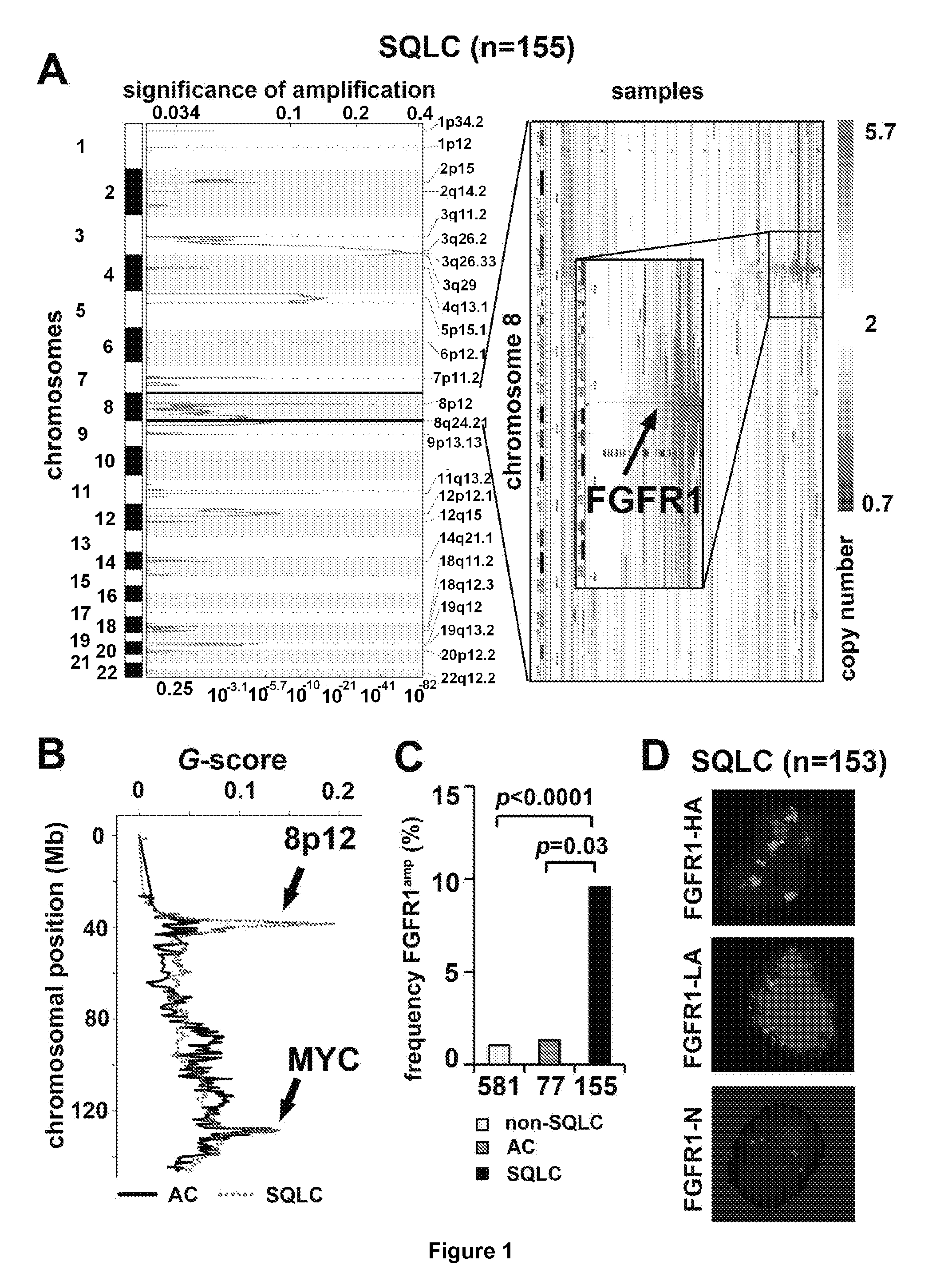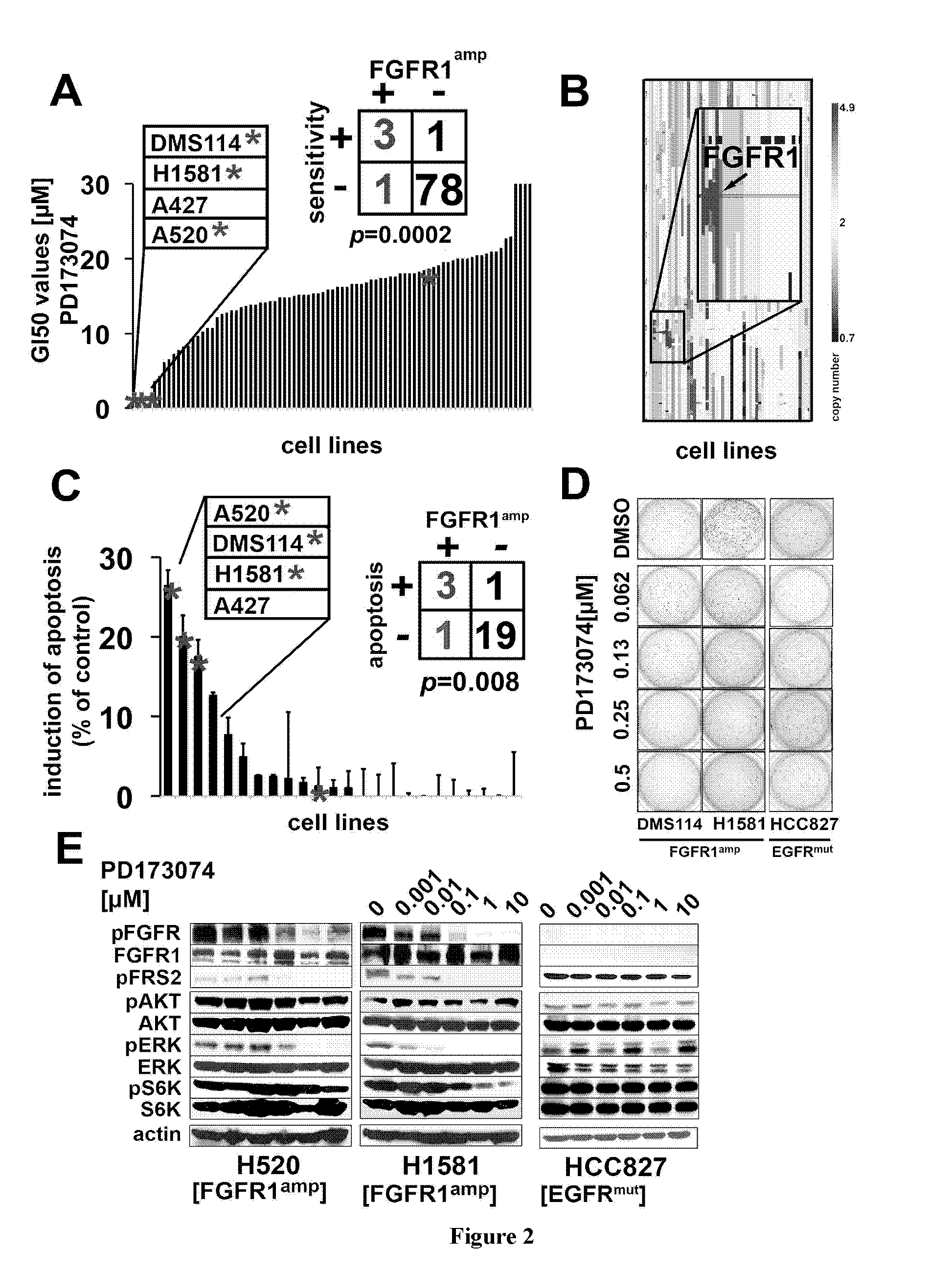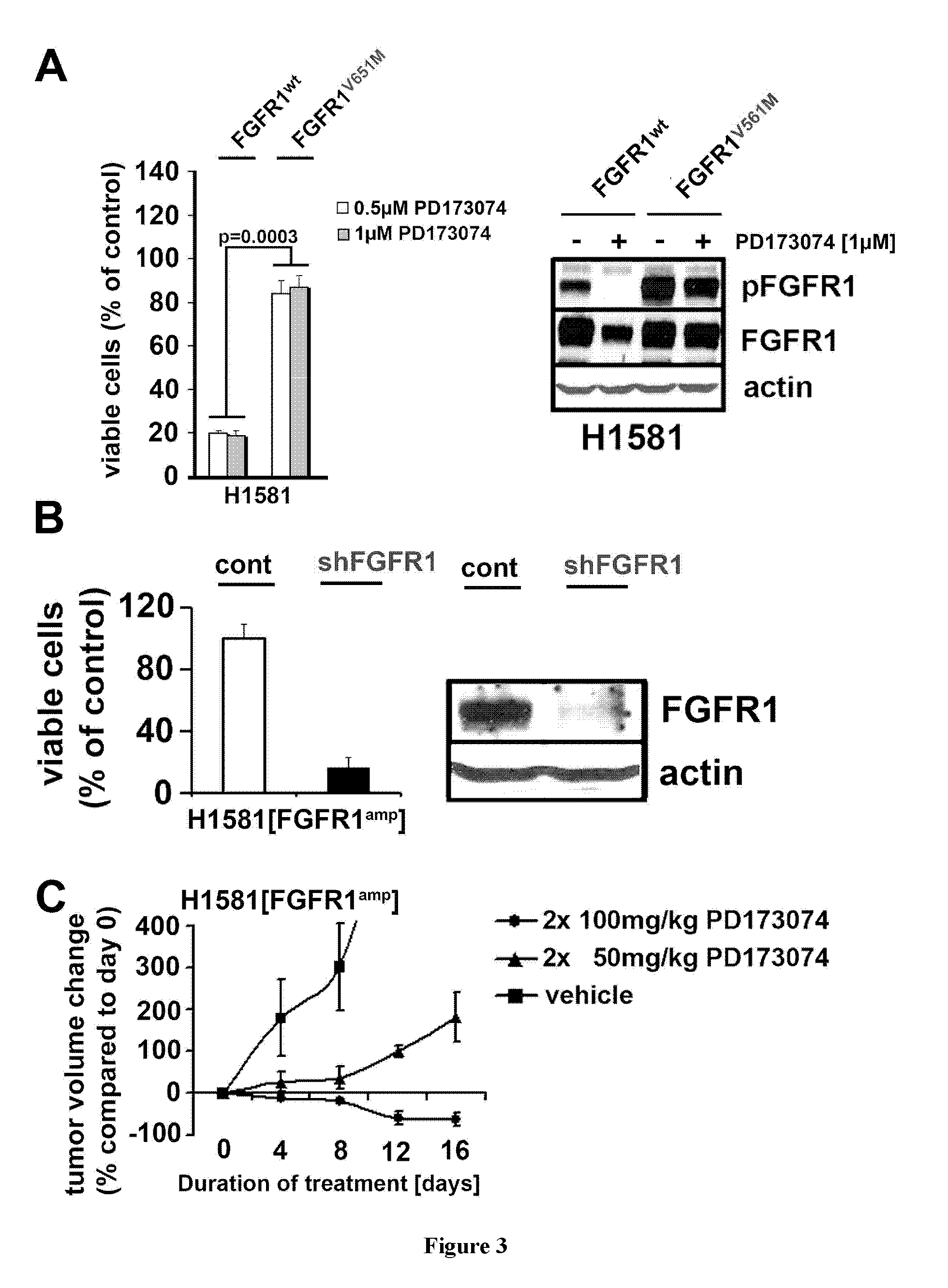Method of treating lung cancer
a lung cancer and biomarker technology, applied in the field of therapeutic methods, can solve the problems that the treatment options for squamous-cell lung cancer patients remain scarce, and achieve the effect of inhibiting growth and provoking apoptosis
- Summary
- Abstract
- Description
- Claims
- Application Information
AI Technical Summary
Benefits of technology
Problems solved by technology
Method used
Image
Examples
examples
[0059]We conducted a systematic search for alterations that are therapeutically amenable and performed high-resolution gene-copy number analyses in a set of 232 lung cancer specimens. We identified frequent (9.7% of cases) and focal FGFR1 amplification in squamous-cell lung cancer (n=155), but not in other lung cancer subtypes, and confirmed its presence in an independent cohort of squamous-cell lung cancer samples employing FISH. Using cell-based screening with the FGFR inhibitor (PD173074) in a large (n=83) panel of lung cancer cell lines, we demonstrated that this compound inhibited growth (p=0.0002) and induced apoptosis (p=0.008) specifically in those lung cancer cells carrying amplified FGFR1. We validated the dependency on FGFR1 of FGFR1-amplified cell lines by knockdown of FGFR1 and by ectopic expression of a resistance allele of FGFR1 (FGFR1V561M), which rescued FGFR1-amplified cells from PD173074-mediated cytotoxicity. Finally we showed that inhibition of FGFR1 with a smal...
PUM
 Login to View More
Login to View More Abstract
Description
Claims
Application Information
 Login to View More
Login to View More - R&D
- Intellectual Property
- Life Sciences
- Materials
- Tech Scout
- Unparalleled Data Quality
- Higher Quality Content
- 60% Fewer Hallucinations
Browse by: Latest US Patents, China's latest patents, Technical Efficacy Thesaurus, Application Domain, Technology Topic, Popular Technical Reports.
© 2025 PatSnap. All rights reserved.Legal|Privacy policy|Modern Slavery Act Transparency Statement|Sitemap|About US| Contact US: help@patsnap.com



